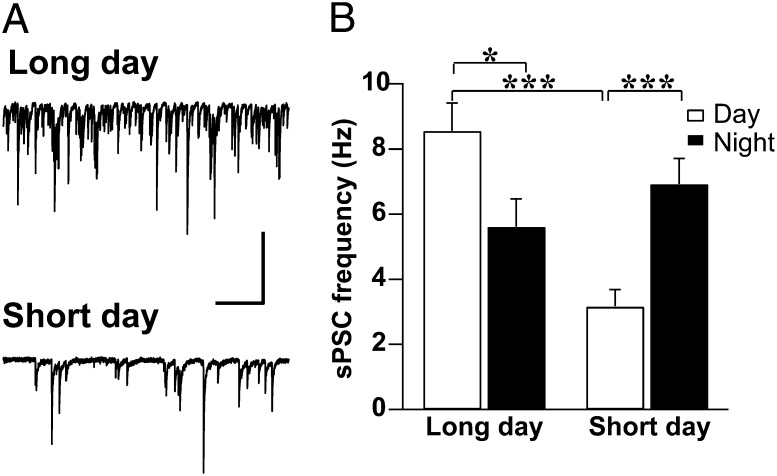Fig. 1.
Long-day photoperiod increases frequency of GABAergic sPSCs. (A) Examples of sPSC daytime recordings from SCN neurons of mice entrained to a long-day or short-day photoperiod. The neurons were voltage-clamped at −70 mV. (Scale bars, 50 pA, 1 s.) (B) Mean ± SEM of the frequency of GABAergic sPSCs recorded during the day and night for long-day (8.56 ± 0.86 Hz, n = 63; 5.61 ± 0.86 Hz, n = 50) and short-day (3.16 ± 0.52 Hz, n = 52; 6.92 ± 0.79 Hz, n = 48) photoperiods. GABAergic events were selected from the raw dataset exemplified in A based on their characteristic decay time (see Materials and Methods). *P < 0.05, **P < 0.01, ***P < 0.001, independent Student's t test.

